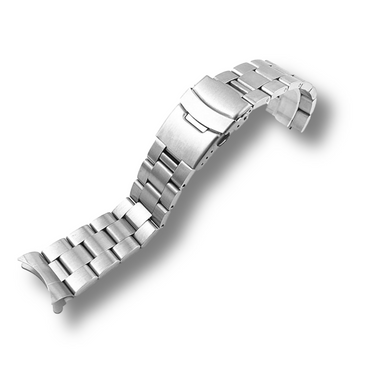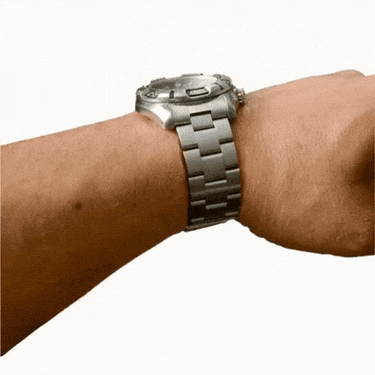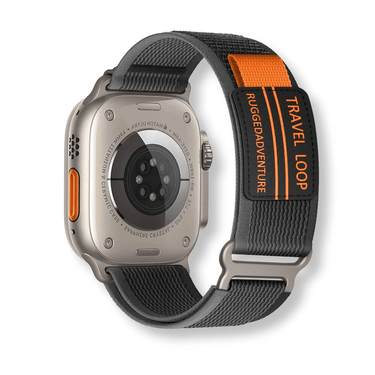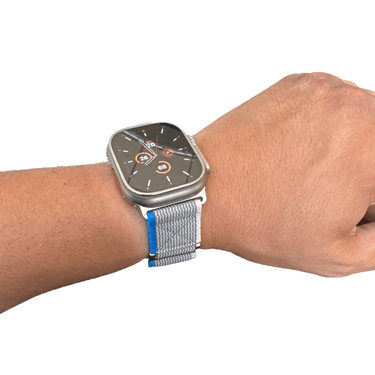The Importance of Watch Winders
As a watch enthusiast, you understand the value of keeping your timepiece in tip-top shape. A watch winder can be a valuable tool in maintaining the health and longevity of your beloved watches.
If you're not already using one, it's time to consider investing in a good quality watch winder. A watch winder mimics the movement of your wrist when you're wearing your watch to keep it wound and accurate.
It's especially useful for automatic watches that require consistent movement to keep running. Without a watch winder, an automatic timepiece will stop running after about two days of being idle, leading to frustrating resets and recalibrations every time you want to wear it again.
The Purpose of Watch Winder Maintenance
The purpose of maintaining your watch winder is simple: To ensure that it keeps working properly for years to come. Like any machine, regular upkeep can mean the difference between an expensive replacement or repair down the line or getting many years out of what you already own. You invested good money in your collection, so don't neglect their care by letting them sit idle without proper maintenance.
Overview Of What Will Be Covered In This Article
In this article, we'll be looking at essential tips for maintaining your watch winder like a pro. We'll cover everything from basic cleaning techniques to advanced maintenance procedures such as oiling and lubricating internal components. Additionally, we'll discuss common issues with watch winders and how to troubleshoot them effectively.
We'll explore advanced techniques such as adjusting winding speed and direction based on different watches' needs and upgrading your current device. Stay tuned for our deep dive into each aspect so that you can get more out of your cherished timepieces.
The Basics of Watch Winder Maintenance
Understanding How a Watch Winder Works
Before diving into the more technical aspects of maintenance, it's important to have a basic understanding of how a watch winder functions. A watch winder is a device that mimics the movement of your wrist, keeping automatic watches wound and ready to wear at all times.
This is particularly useful for people who own multiple automatic watches and cannot wear them all at once. Most watch winders consist of a motorized base that rotates the watch on its axis, simulating the natural movement of your wrist.
The rotation speed and direction can usually be customized to suit each individual watch's needs. Some higher-end models even come with additional features such as humidity control or UV protection.
Cleaning and Dusting the Exterior of Your Watch Winder
Now that you have a basic understanding of how your watch winder works, let's move on to maintenance basics. It’s always wise to keep the exterior clean from dust, dirt or any other debris that may accumulate over time through daily use.
First things first: unplug your device before beginning any cleaning process (this might seem like an obvious thing to do, but you'd be surprised!). Next, use a soft-bristled brush or microfiber cloth to gently remove any dust or debris from the exterior surfaces.
Be sure not to apply too much pressure when cleaning certain parts as they might break easily - especially if you own luxury models. Using an alcohol-based solution in conjunction with warm water can help remove any grime or staining that has built up over time due to daily handling.
Checking for Any Loose Screws or Parts
in our basics section, it is essential to pay attention regarding loose screws and parts when maintaining your watch winder since these issues could lead to malfunctions. Checking for loose screws or parts is a significant aspect of maintenance and should be done regularly. Gently move each part of the watch winder, checking that it moves freely without impediments.
If something seems loose, try tightening any visible screws with a proper tool. If you cannot resolve the issue with these simple steps, it might be time to look into professional servicing options.
The basics of watch winder maintenance are easy to follow and essential to keep your device functioning correctly over time. Understanding how your watch winder works, cleaning the exterior regularly and checking for loose parts will help ensure your timepiece stays in perfect condition for many years to come!
Deep Cleaning Your Watch Winder
Now it's time to take a deeper dive into watch winder maintenance. Disassembling your watch winder is not for the faint of heart, but it’s necessary to get all the nooks and crannies clean to keep your timepiece ticking smoothly. Before you begin, make sure you have a clear workspace and all necessary tools for the job.
First, remove your watch from the winder and unplug it from power. Begin by unscrewing any visible screws that hold the case together.
Once you’ve removed all visible screws, use a precision screwdriver to gently pry off the back cover of your watch winder. Keep in mind that some models may require different methods or tools for disassembly; always consult your user manual or seek professional help if you’re unsure.
Cleaning Each Component Thoroughly
Once you’ve successfully disassembled your watch winder, it's time to get down to business. Take note of how each component fits together before beginning cleaning, so reassembly is easier later on. Use a soft-bristled brush or microfiber cloth to clean each component thoroughly; this includes everything from gears and cogs to bearings and rotors.
For any stubborn areas with grime or dust buildup, use a toothbrush dipped in rubbing alcohol or specialized cleaning solution recommended by the manufacturer. Avoid using regular soap as it can leave residue which damages the mechanism over time.
Reassembling Your Watch Winder
Congratulations! You’ve made it through deep cleaning your watch winder components. Now comes the tricky part: reassembly.
Remember when we suggested taking photos during disassembly? This is where they come in handy!
Gently replace each component back into the watch winder while making sure everything fits together snugly. Make sure to double-check your work and test that everything is working as it should before sealing the case.
If you’re uncertain about any part of reassembly, it’s advisable to seek professional help. By taking proper care of your watch winder with deep cleaning, you’ll be able to ensure its longevity and protect your timepiece investment for years to come.
Troubleshooting Common Issues with Watch Winders
Identifying common issues with watch winders
As much as we'd like to think that our watch winders are infallible, they can experience issues from time to time. The first step in troubleshooting these issues is identifying them. Common issues include incorrect winding direction and inconsistent winding cycles.
If you notice that your watch is not winding in the correct direction, it may be due to a faulty or worn-out motor. Additionally, if you notice that your watch is not consistently winding, it may be due to a dirty or obstructed winding mechanism.
Fixing issues such as incorrect winding direction or inconsistent winding cycles
Before seeking professional help, there are a few steps you can take to fix common issues with your watch winder. If you're experiencing incorrect winding direction, try reversing the orientation of your watch on the winder. This may help reposition the motor and allow for proper winding.
If you're experiencing inconsistent winding cycles, try cleaning the internal components of the winder with compressed air or a small brush. This will remove any dust or debris that may be obstructing proper movement.
When to seek professional help
While there are steps you can take to troubleshoot and fix common issues with your watch winder, there may come a time when professional help is necessary. If you've tried fixing the issue yourself and it persists or worsens, it's probably time to seek out an expert. Additionally, if your watch winder is still under warranty, it's important to reach out to the manufacturer for assistance before attempting any repairs yourself.
Remember: proper maintenance and care of your watch winder can go a long way in preventing these types of issues from occurring in the first place. However if they do occur don't be afraid to seek help from a professional.
Advanced Techniques for Watch Winder Maintenance
Oiling and lubricating the internal components of your watch winder
When it comes to properly maintaining your watch winder, oiling and lubricating the internal components is an absolute must. Without proper lubrication, the gears in your watch winder can grind against each other, causing significant wear and tear over time.
This can ultimately lead to expensive repairs or even complete failure of your device. To begin this process, you'll need a high-quality lubricant designed specifically for watches.
Apply a small amount of oil to each gear or pivot point using a fine-tipped applicator. Be sure not to use too much oil, as excess can attract dust and debris that will only further harm your device.
Adjusting the winding speed and direction to match different watches’ needs
One of the most impressive features of modern watch winders is their ability to adjust winding speed and direction based on individual watch settings. This allows you to customize the rotation pattern of your device depending on what type of timepiece you're storing inside.
For example, some high-end mechanical watches require more frequent rotations throughout the day in order to keep time accurately. By adjusting the winding speed on your watch winder accordingly, you can ensure that these watches stay fully wound at all times.
Upgrading Your Current Watch Winder
If you're serious about keeping your valuable timepieces in top condition for years to come, it may be worth considering an upgrade to your current watch winder setup. Modern devices offer a wealth of advanced features that simply weren't available even just a few years ago.
Some models include built-in sensors that detect when a watch has been fully wound and automatically shut off power until it's needed again. Others allow for remote control access via smartphone app, so you can monitor your watches even when you're far away from home.
No matter which direction you choose to take your watch winder maintenance routine, the key is to stay consistent and always pay close attention to your devices. By doing so, you'll be able to enjoy your collection of fine timepieces for many years to come.
Conclusion
Summary of key points covered in this article.
In this article, we have discussed the basics of watch winder maintenance, deep cleaning techniques, and troubleshooting common issues with watch winders. We also covered advanced techniques for maintaining your timepiece such as oiling and lubricating the internal components of your watch winder and adjusting the winding speed and direction to match different watches' needs. Remember that proper maintenance not only helps keep your watch running correctly, but it can also increase its lifespan.
The benefits of regular maintenance on your timepiece.
Regular maintenance is essential for your timepiece to last as long as possible. When you invest in a high-quality watch, you want to ensure it continues to work perfectly for years to come.
Regular cleaning can prevent dust and debris from building up on the exterior or interior components, resulting in better accuracy and functionality. Another benefit of regular watch winder maintenance is that it can increase the value of your timepiece.
Watches are similar to cars in that they require regular upkeep to maintain their value. A well-maintained watch will retain its resale value far better than one that has been neglected or improperly maintained.
Final thoughts on maintaining a high-quality, long-lasting timepiece
Maintaining a high-quality, long-lasting timepiece requires dedication and commitment. It may seem like a tedious task at first, but with proper education and guidance like what we have discussed today, anyone can easily maintain their own watches without having to rely solely on professionals.
Taking good care of our valuable possessions is essential if we want them to last longer and remain timeless throughout generations. Your quality timepieces need all the attention they deserve if you want them functioning optimally for years with little wear or tear over time.

























